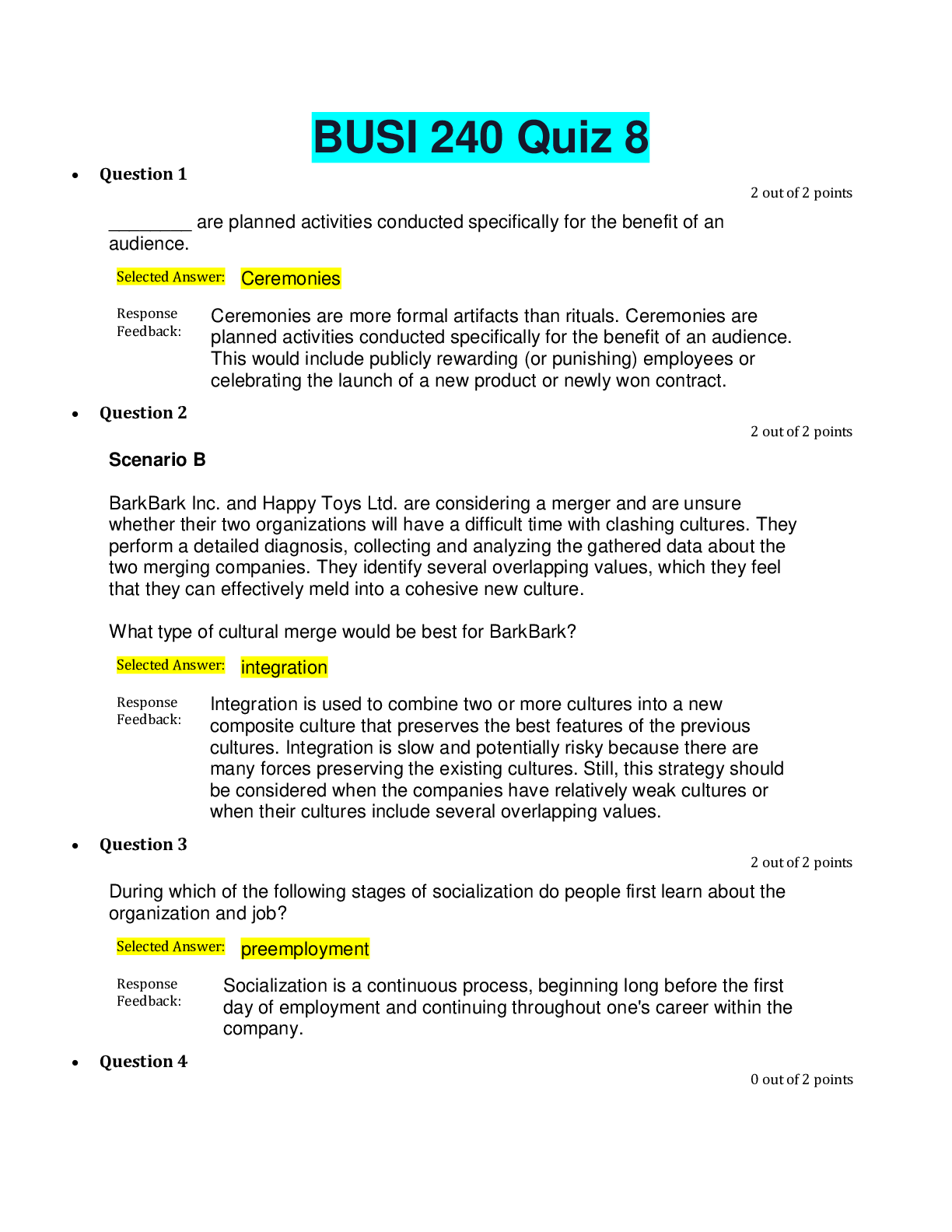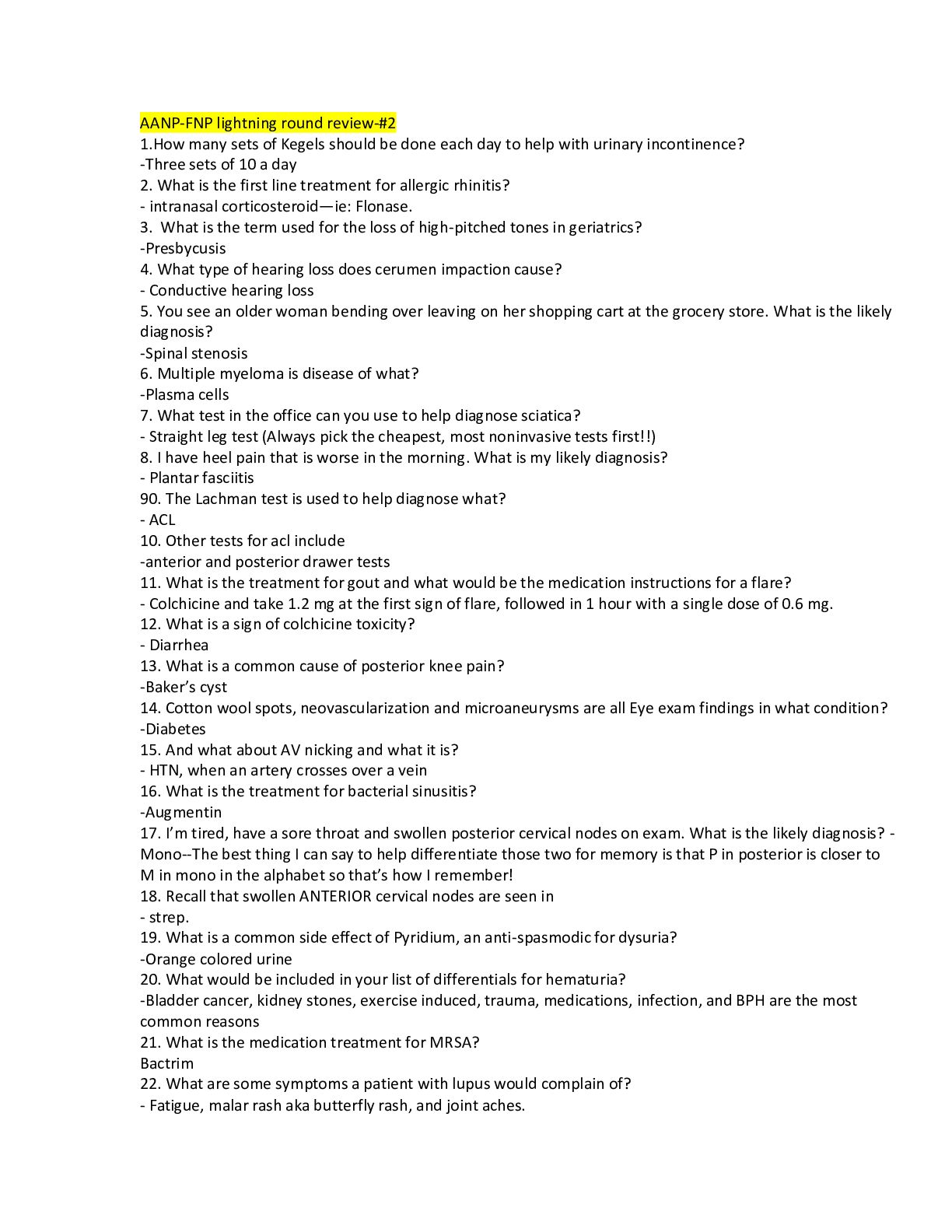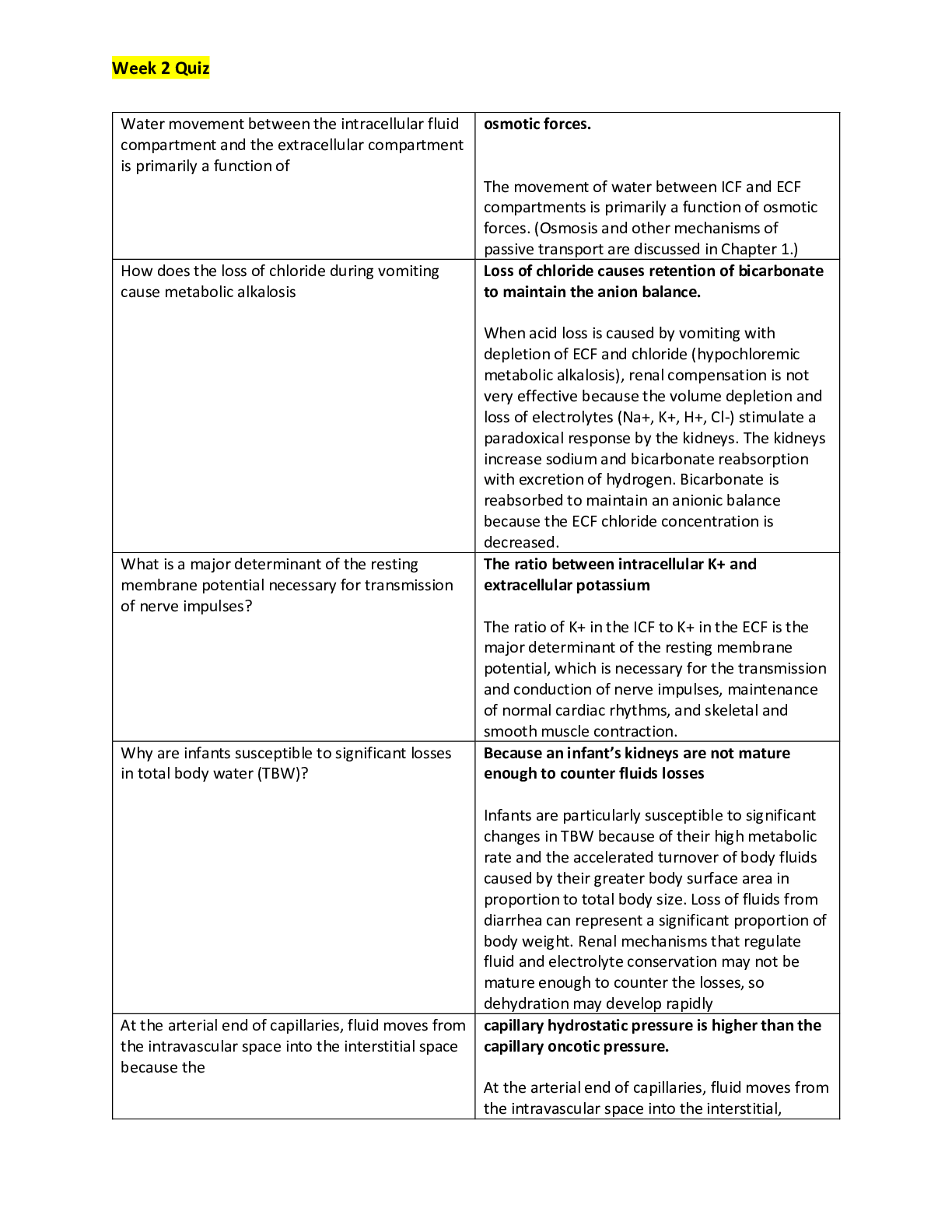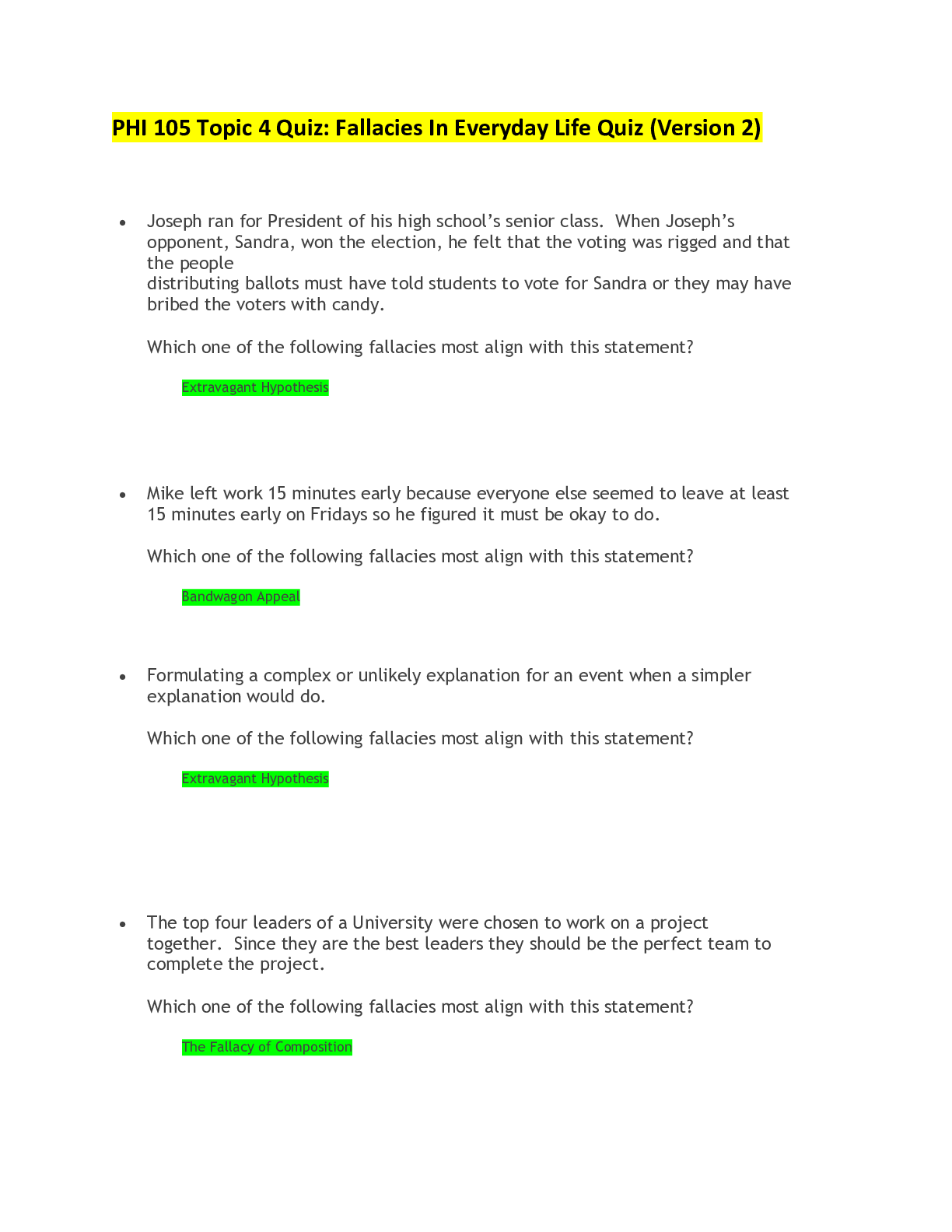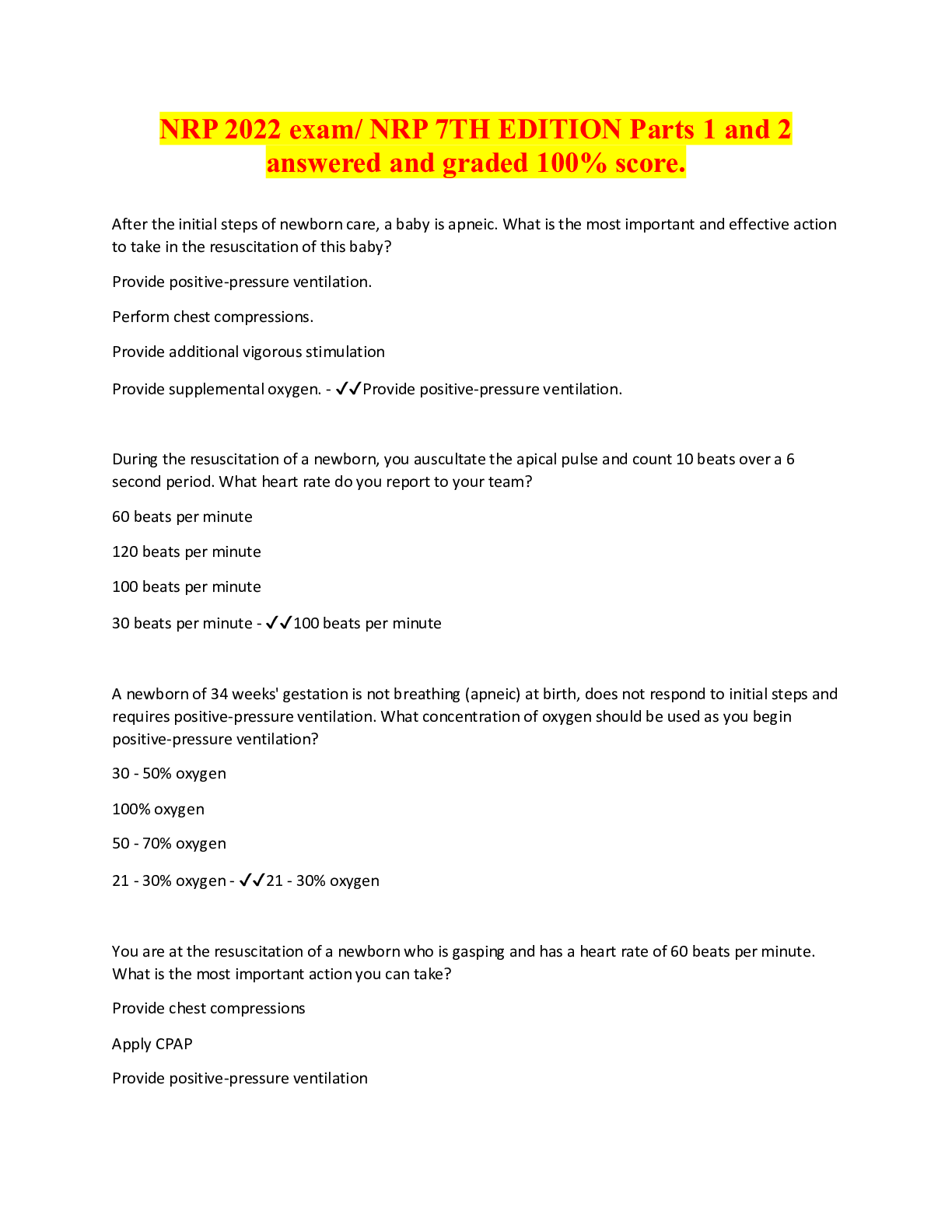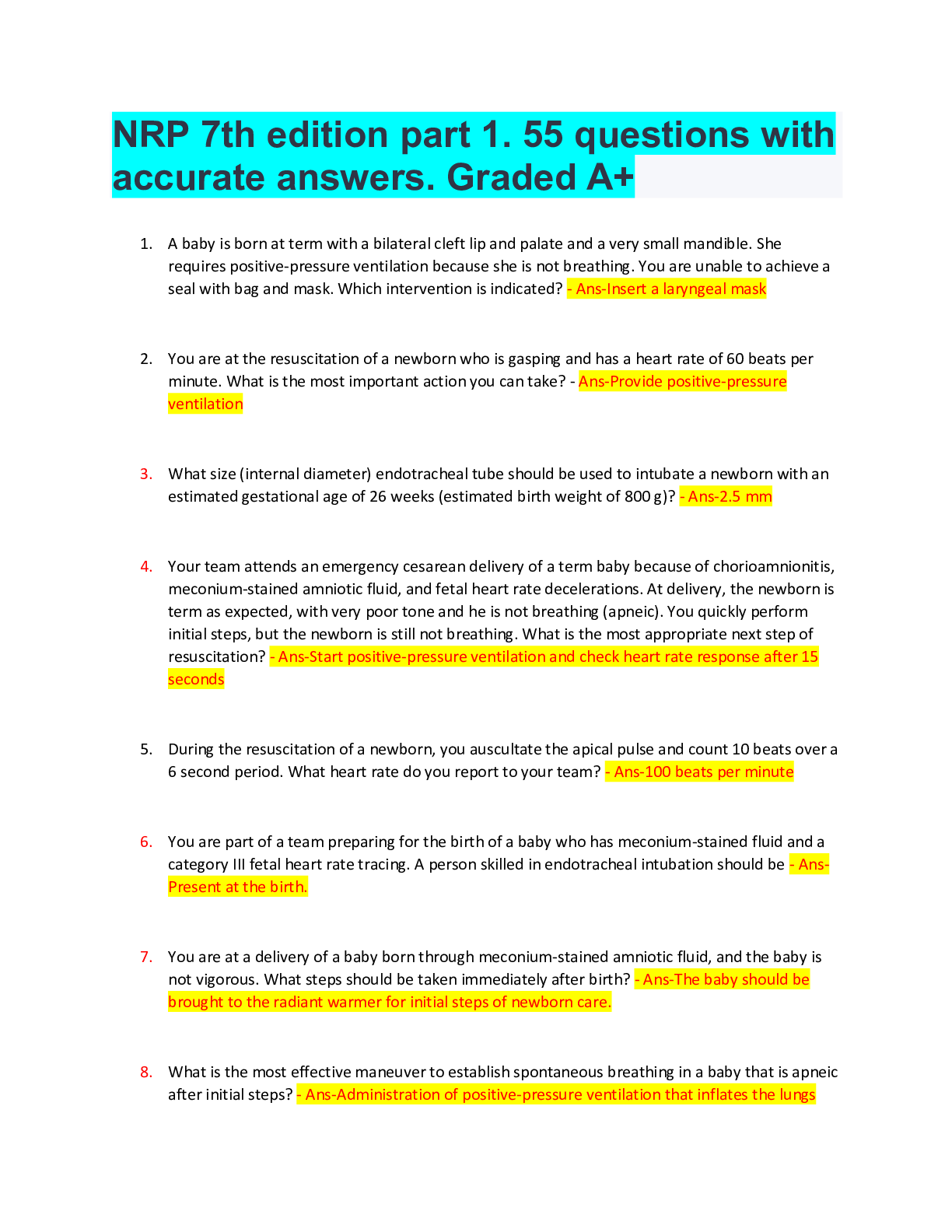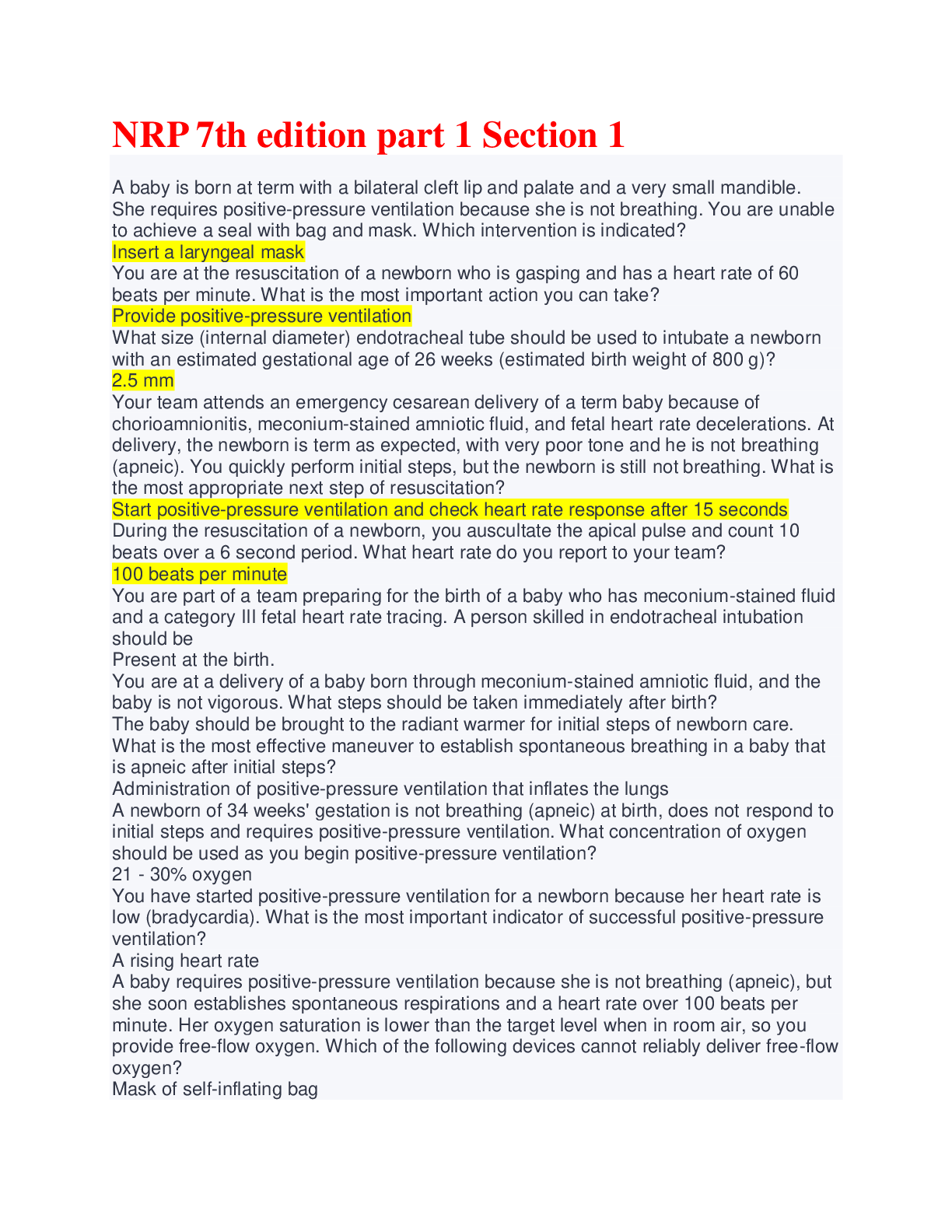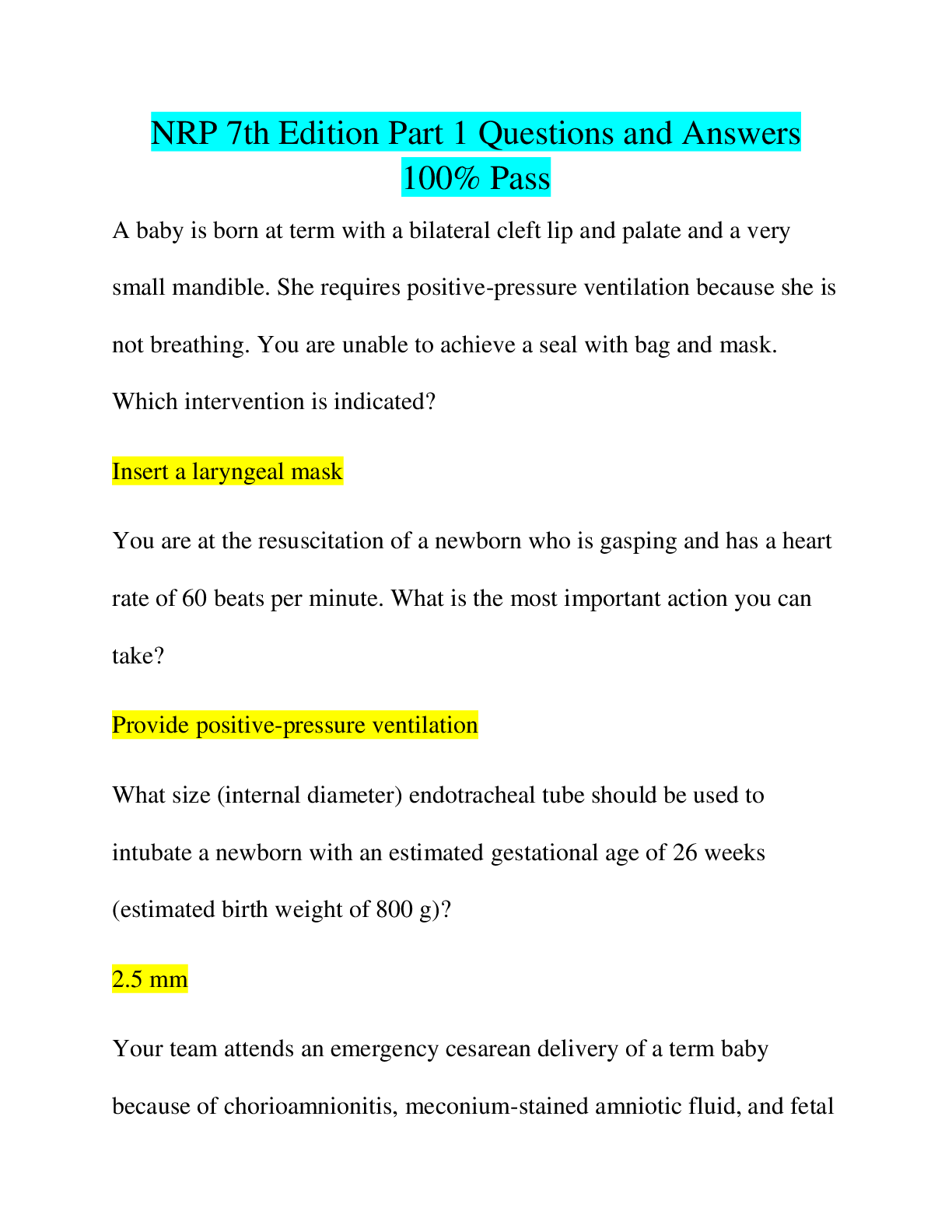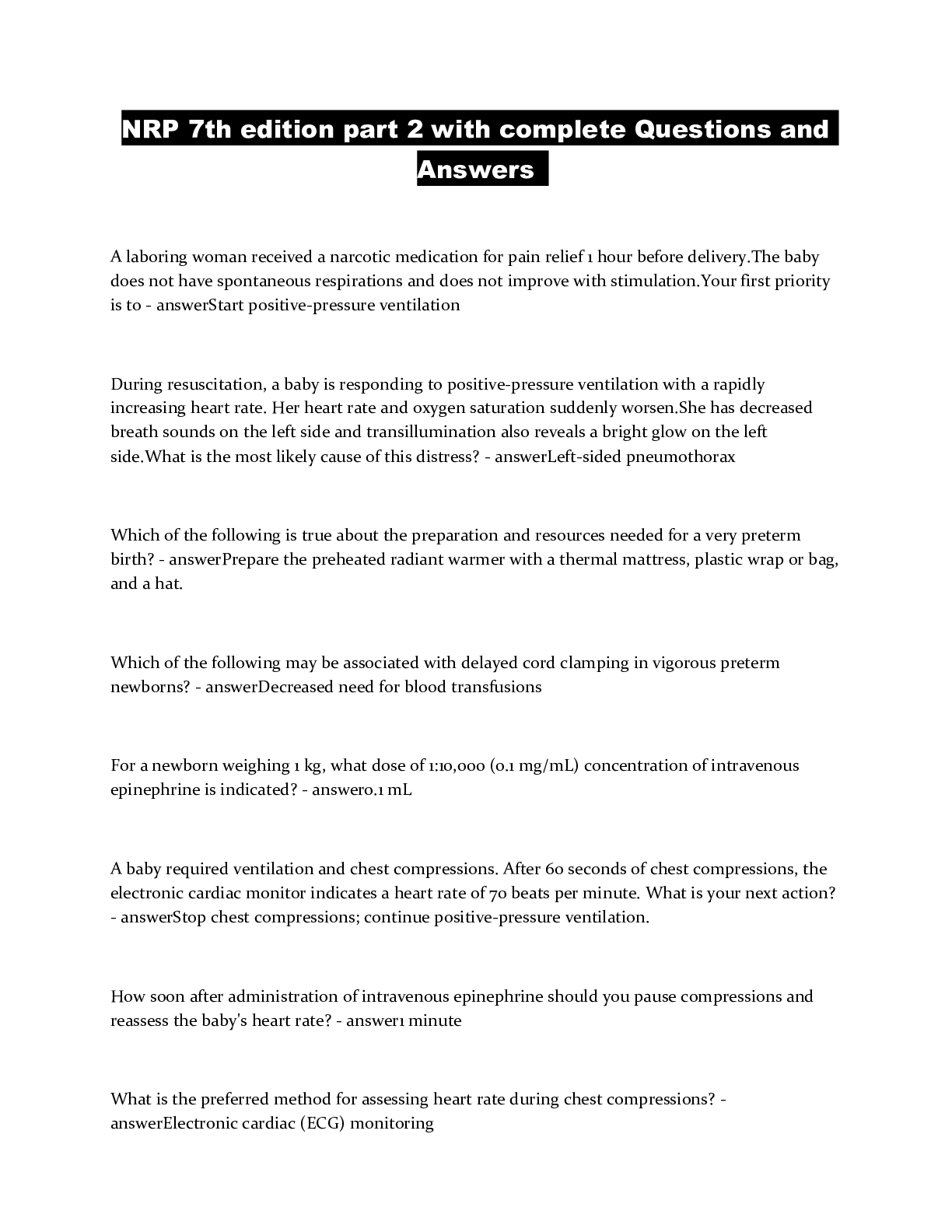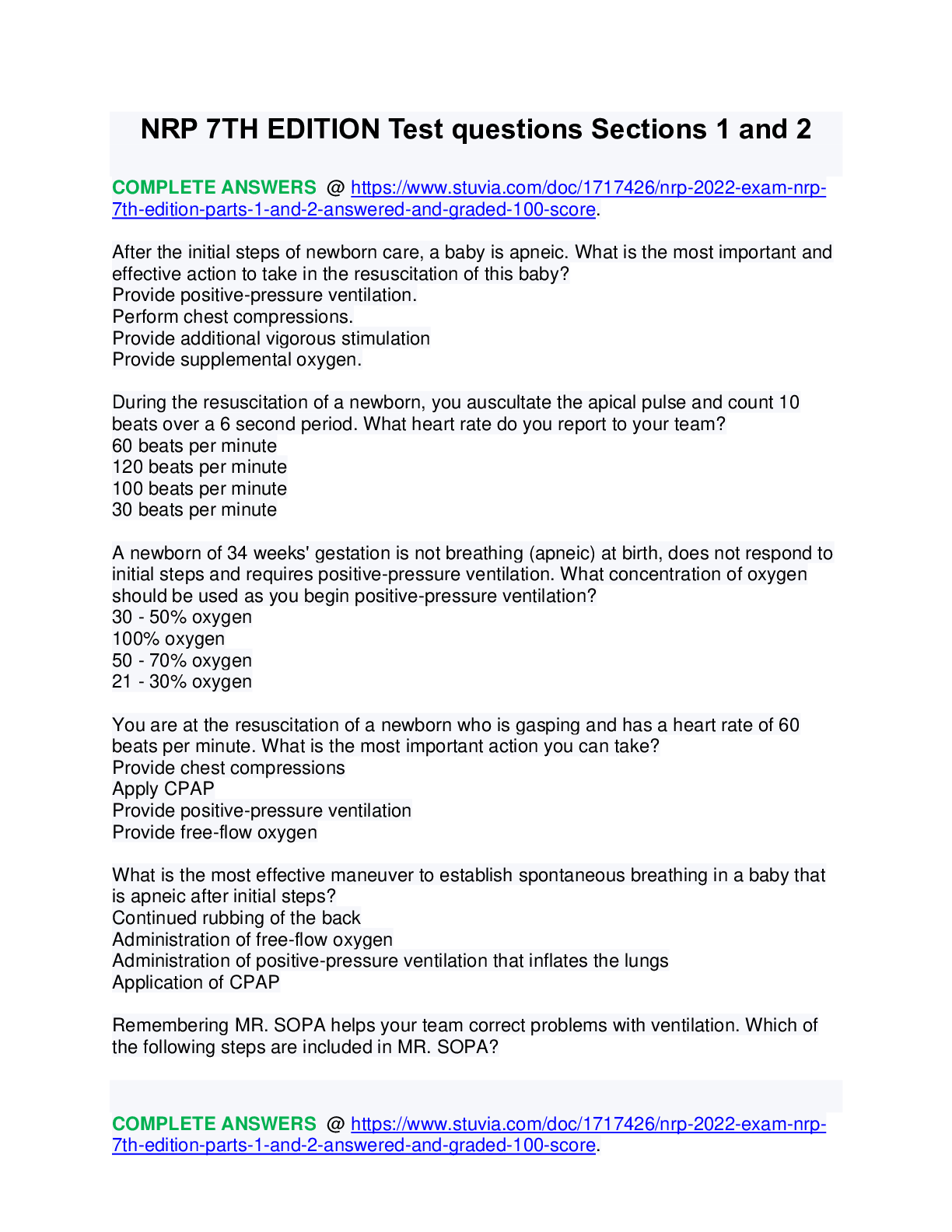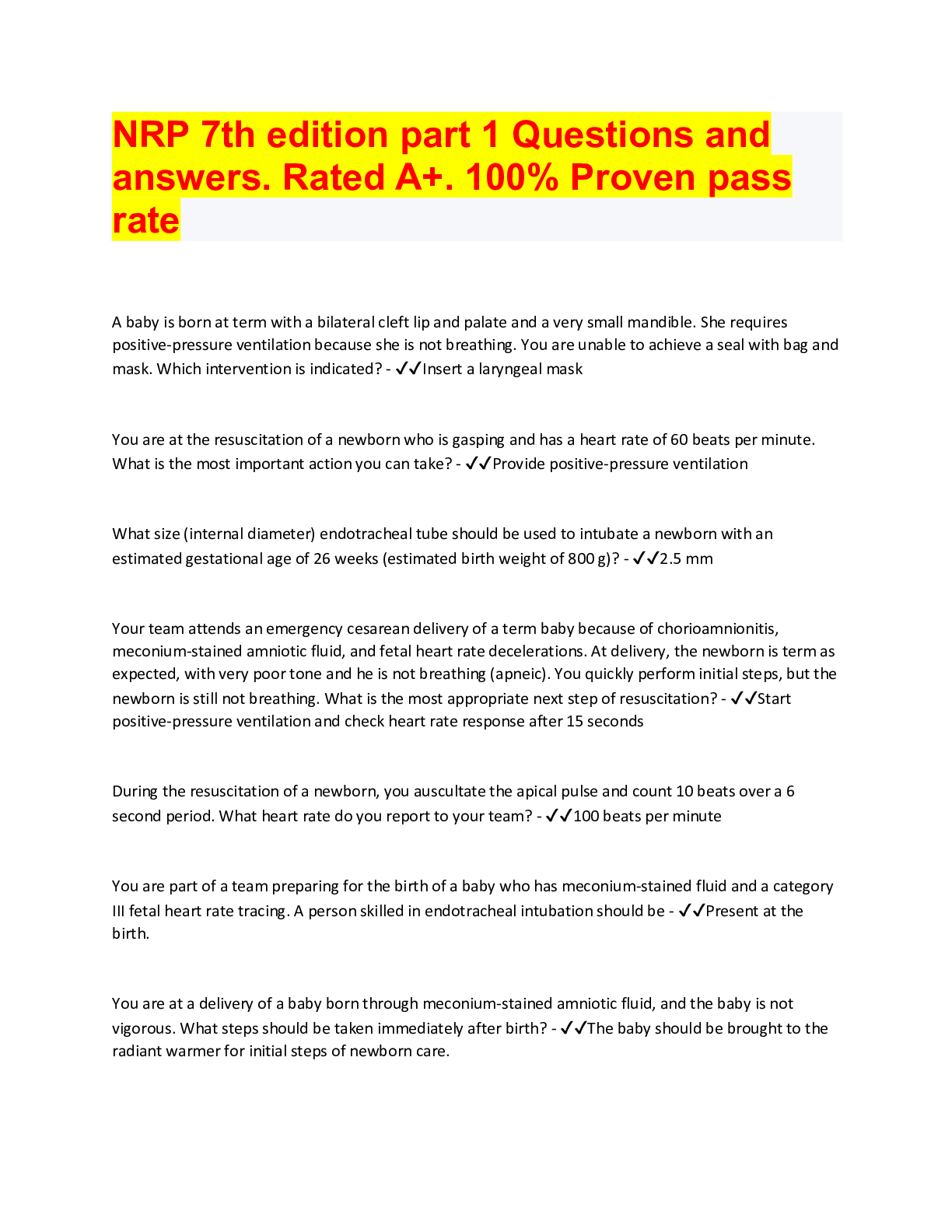Emergency Medicine > QUESTIONS & ANSWERS > NRP 7TH EDITION SECTION 1 EXAM / NRP 7TH EDITION Part 1; Questions & Answers all correct;2022. (All)
NRP 7TH EDITION SECTION 1 EXAM / NRP 7TH EDITION Part 1; Questions & Answers all correct;2022.
Document Content and Description Below
NRP 7TH EDITION Part 1; Questions & Answers all correct;2022. A baby is born at term with a bilateral cleft lip and palate and a very small mandible. She requires positive-pressure ventilation beca... use she is not breathing. You are unable to achieve a seal with bag and mask. Which intervention is indicated? You are at the resuscitation of a newborn who is gasping and has a heart rate of 60 beats per minute. What is the most important action you can take? What size (internal diameter) endotracheal tube should be used to intubate a newborn with an estimated gestational age of 26 weeks (estimated birth weight of 800 g)? Your team attends an emergency cesarean delivery of a term baby because of chorioamnionitis, meconium-stained amniotic fluid, and fetal heart rate decelerations. At delivery, the newborn is term as expected, with very poor tone and he is not breathing (apneic). You quickly perform initial steps, but the newborn is still not breathing. What is the most appropriate next step of resuscitation? During the resuscitation of a newborn, you auscultate the apical pulse and count 10 beats over a 6 second period. What heart rate do you report to your team? You are part of a team preparing for the birth of a baby who has meconium-stained fluid and a category III fetal heart rate tracing. A person skilled in endotracheal intubation should be You are at a delivery of a baby born through meconium-stained amniotic fluid, and the baby is not vigorous. What steps should be taken immediately after birth? What is the most effective maneuver to establish spontaneous breathing in a baby that is apneic after initial steps? A newborn of 34 weeks' gestation is not breathing (apneic) at birth, does not respond to initial steps and requires positive-pressure ventilation. What concentration of oxygen should be used as you begin positive-pressure ventilation? You have started positive-pressure ventilation for a newborn because her heart rate is low (bradycardia). What is the most important indicator of successful positive-pressure ventilation? A baby requires positive-pressure ventilation because she is not breathing (apneic), but she soon establishes spontaneous respirations and a heart rate over 100 beats per minute. Her oxygen saturation is lower than the target level when in room air, so you provide free-flow oxygen. Which of the following devices cannot reliably deliver free-flow oxygen? Which statement best describes normal transitional physiology at the time of birth? A baby is born at 34 weeks' gestation. After the initial steps of resuscitation, the baby is not breathing (apneic). What are the next steps? A full-term baby is born by emergency cesarean delivery because of fetal bradycardia (Category III fetal heart rate tracing). The baby is limp and not breathing after initial steps. What is the next step in the resuscitation process? What is the appropriate technique to stimulate a baby to breathe? You are called to attend to a newborn at birth. At the time the baby is delivered, which 3 questions should you ask to evaluate whether the baby can stay with his mother or be moved to the radiant warmer for further assessment? What is the recommended way to determine if a baby requires supplemental oxygen in the delivery room? You have determined a baby needs resuscitation at birth. What are the initial steps of newborn care? The steps of intubation should ideally be completed within which duration? Effective team functioning is critical in ensuring the best performance. Which of these characteristics is critical in team leaders? You have been called to attend a birth and are the only healthcare provider responsible for the management of the newborn in the room. When should you first call for additional help? After the initial steps of newborn care, a baby is apneic. What is the most important and effective action to take in the resuscitation of this baby? Which statement describes recommended practice when using a pulse oximeter in the delivery room? Your hospital is planning Neonatal Resuscitation Program® training and trying to decide who should be included. Which of the following is an indication for endotracheal intubation? [Show More]
Last updated: 1 year ago
Preview 1 out of 4 pages
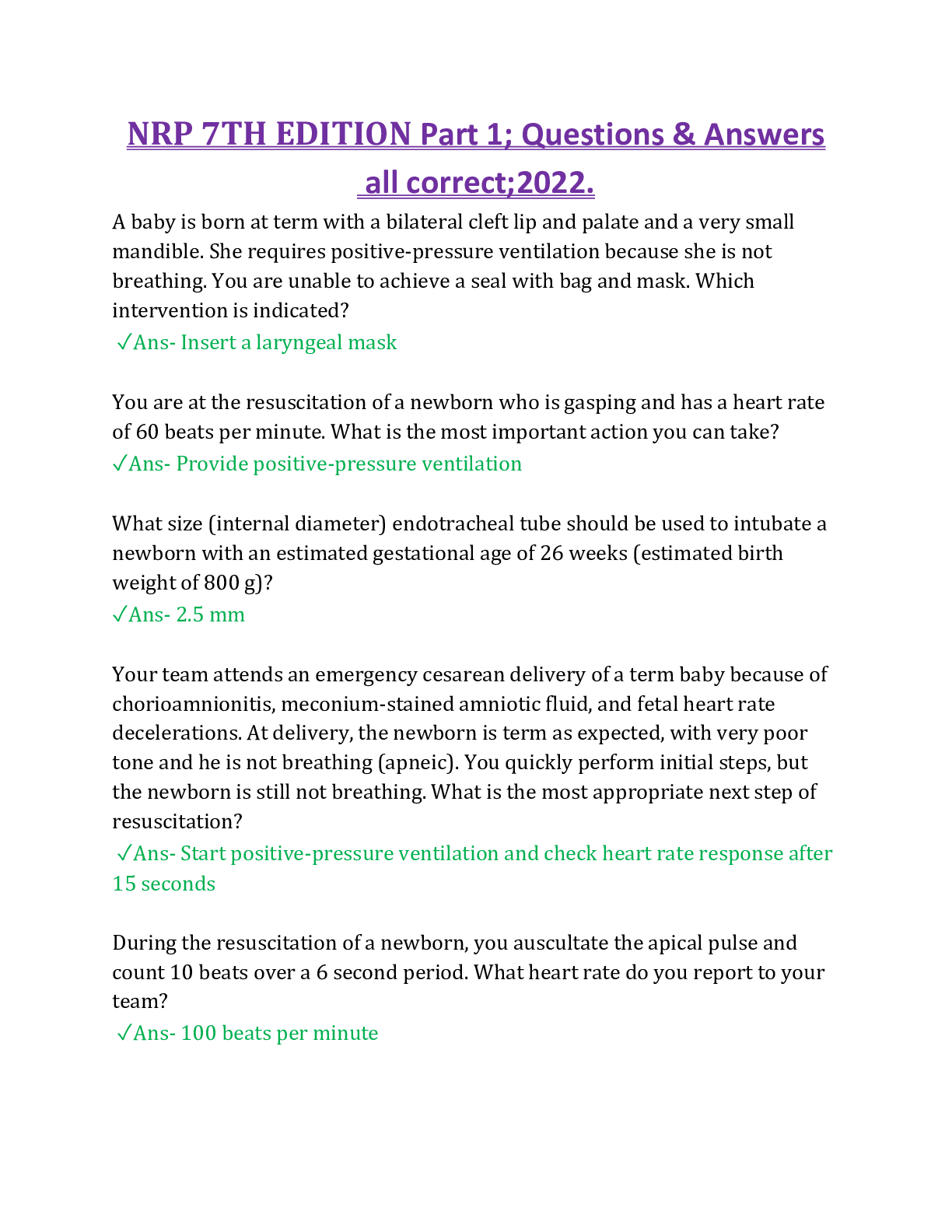
Reviews( 0 )
Document information
Connected school, study & course
About the document
Uploaded On
May 06, 2022
Number of pages
4
Written in
Additional information
This document has been written for:
Uploaded
May 06, 2022
Downloads
0
Views
141

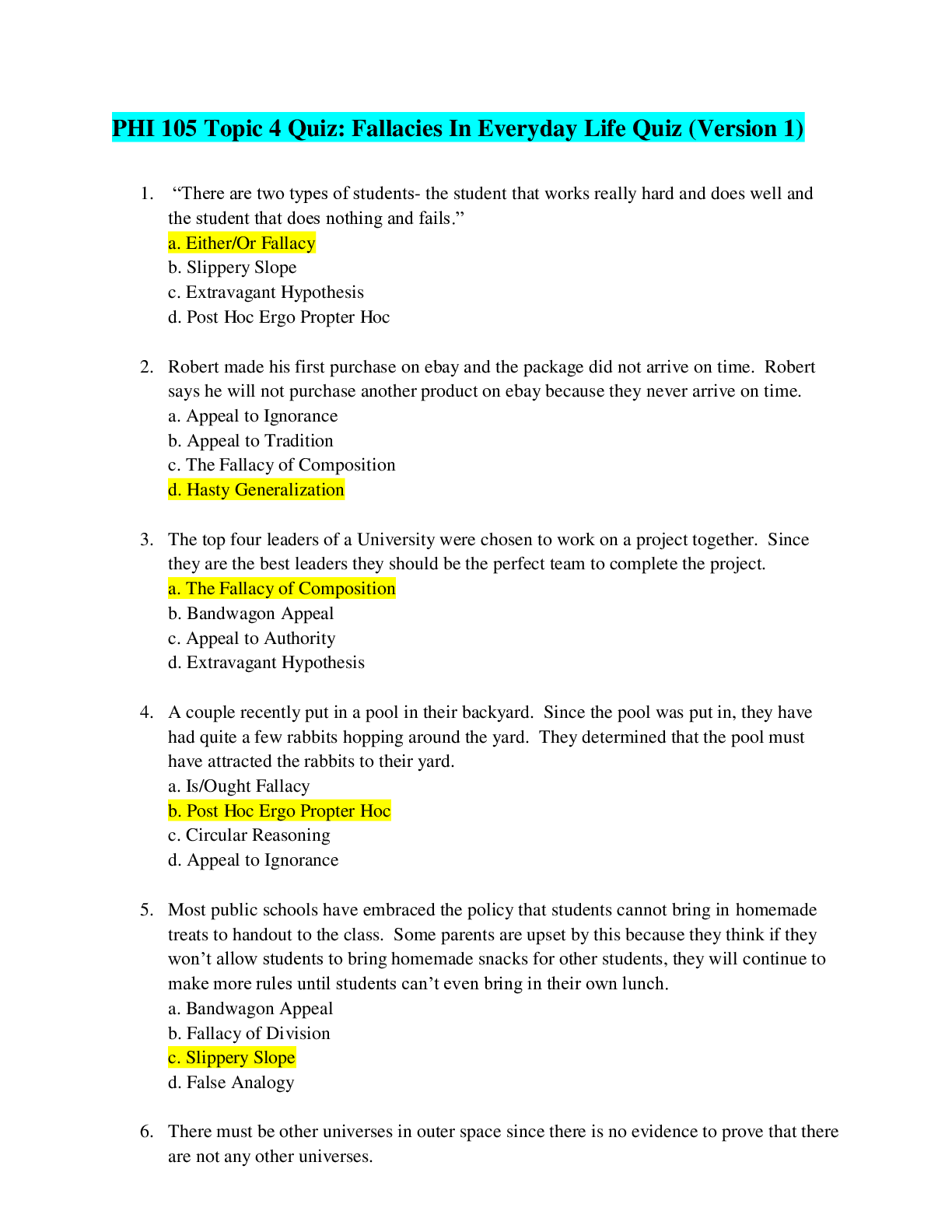


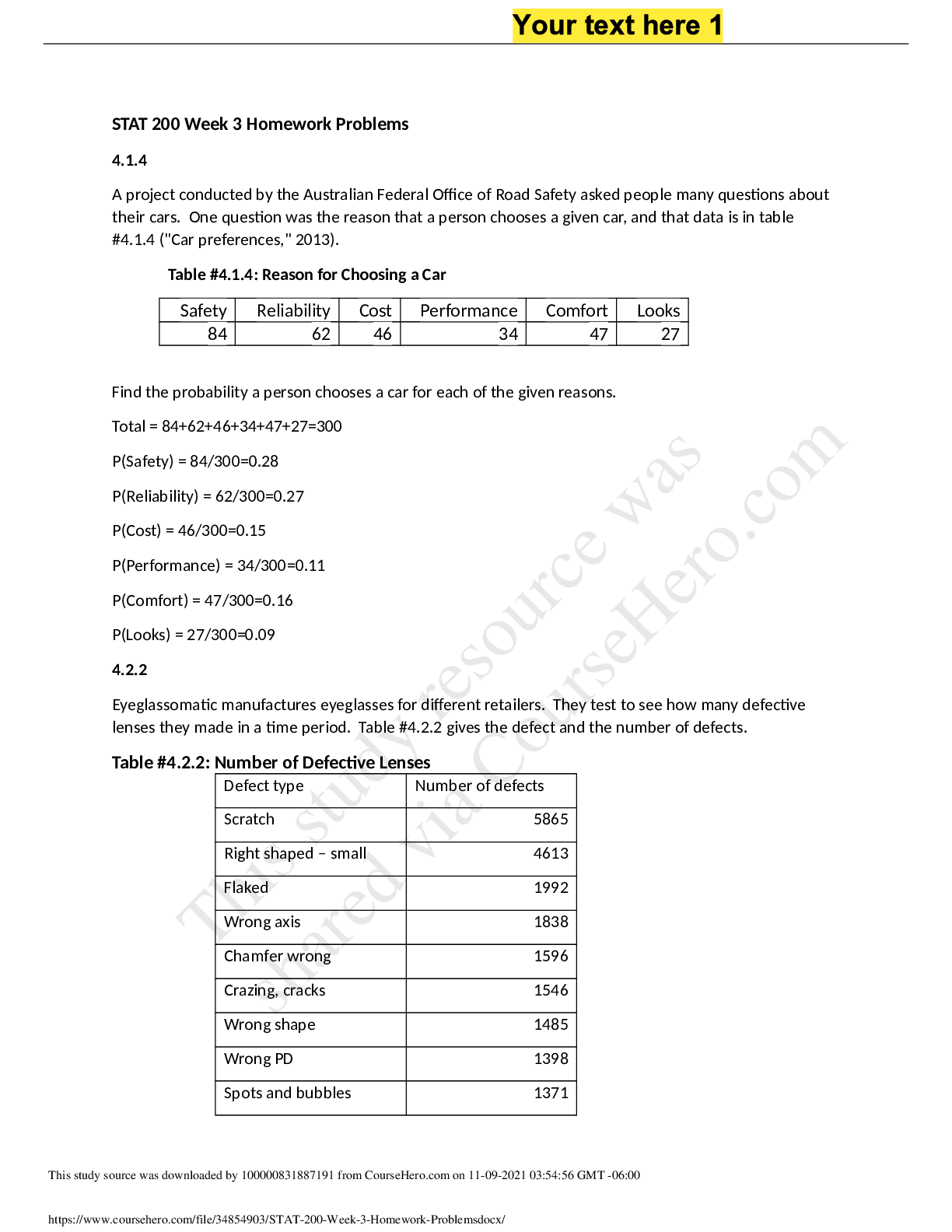
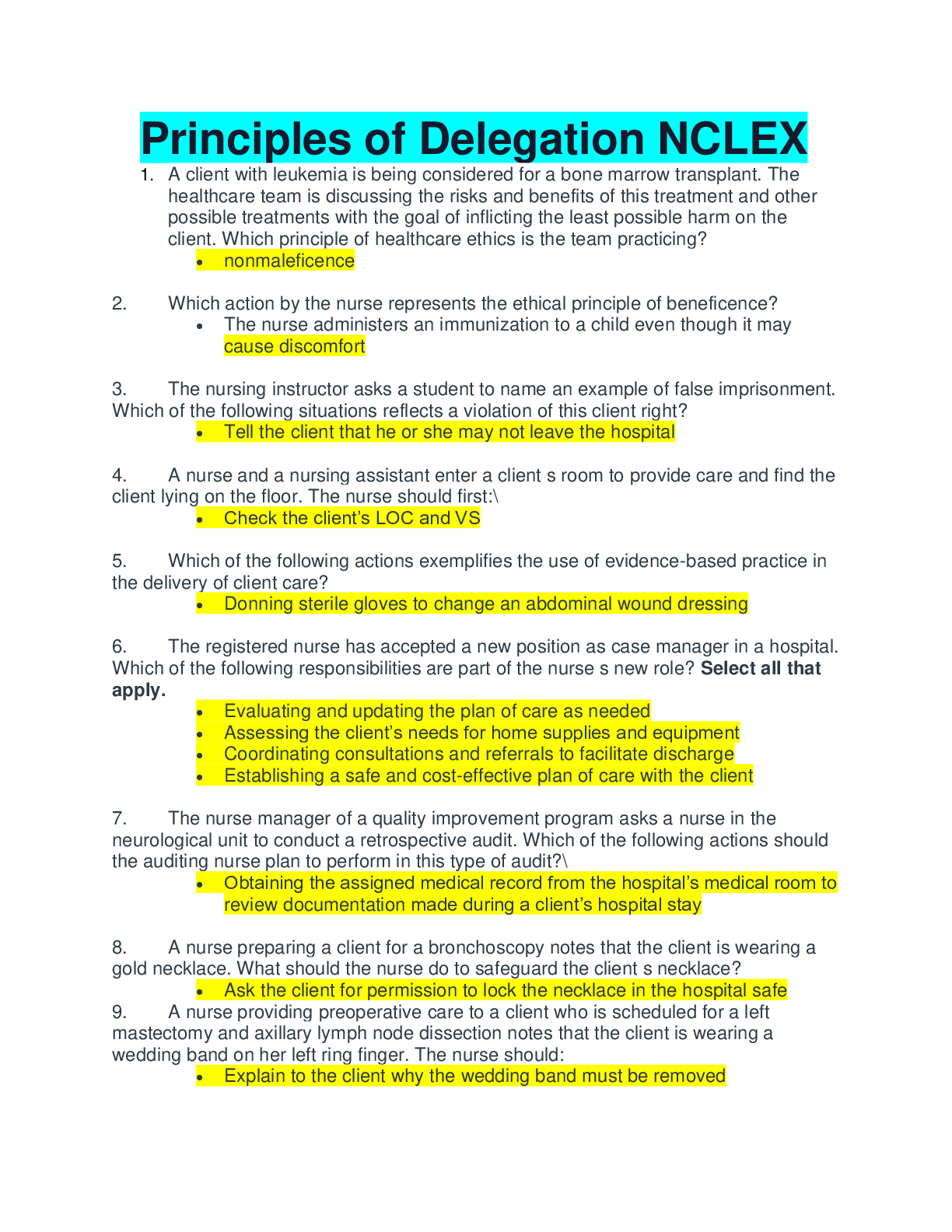
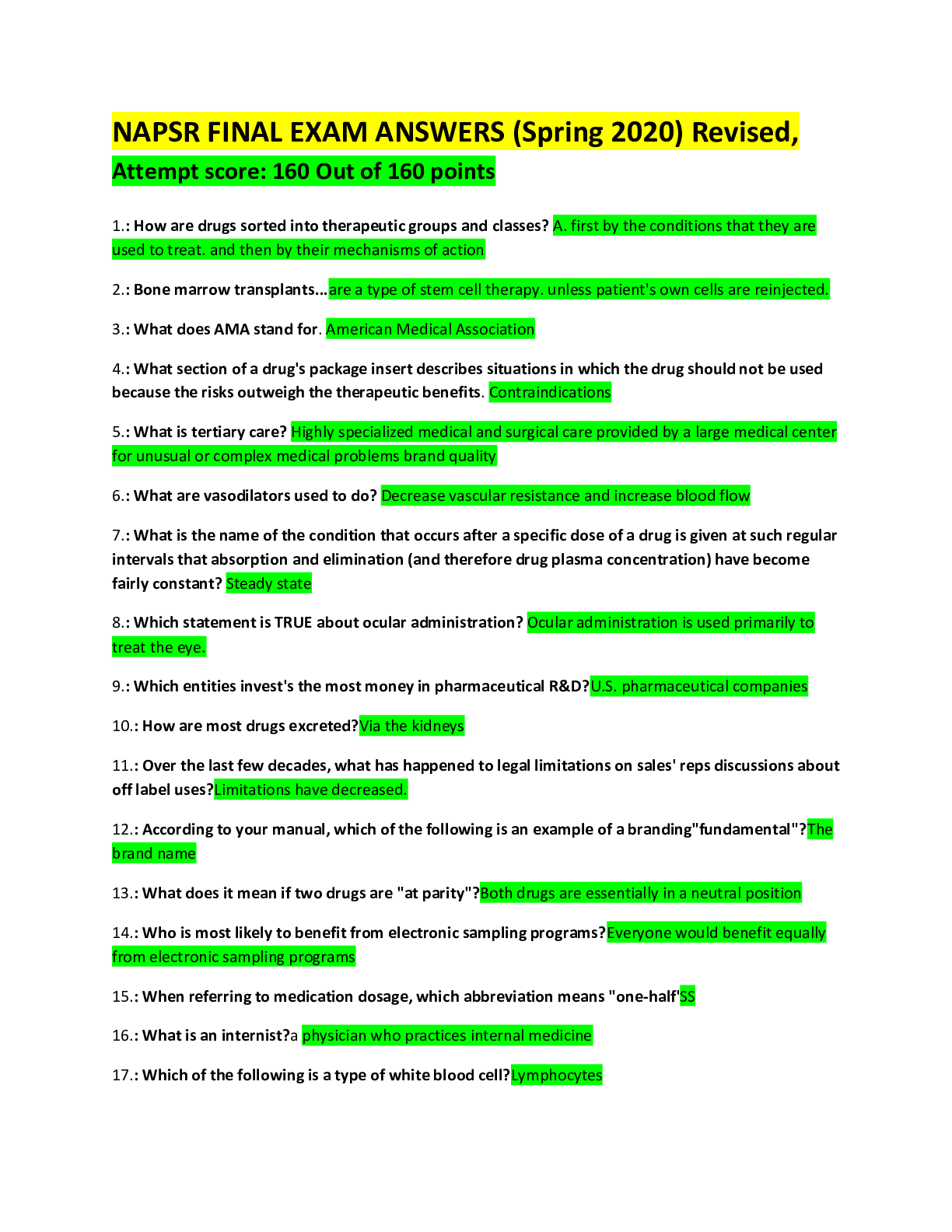
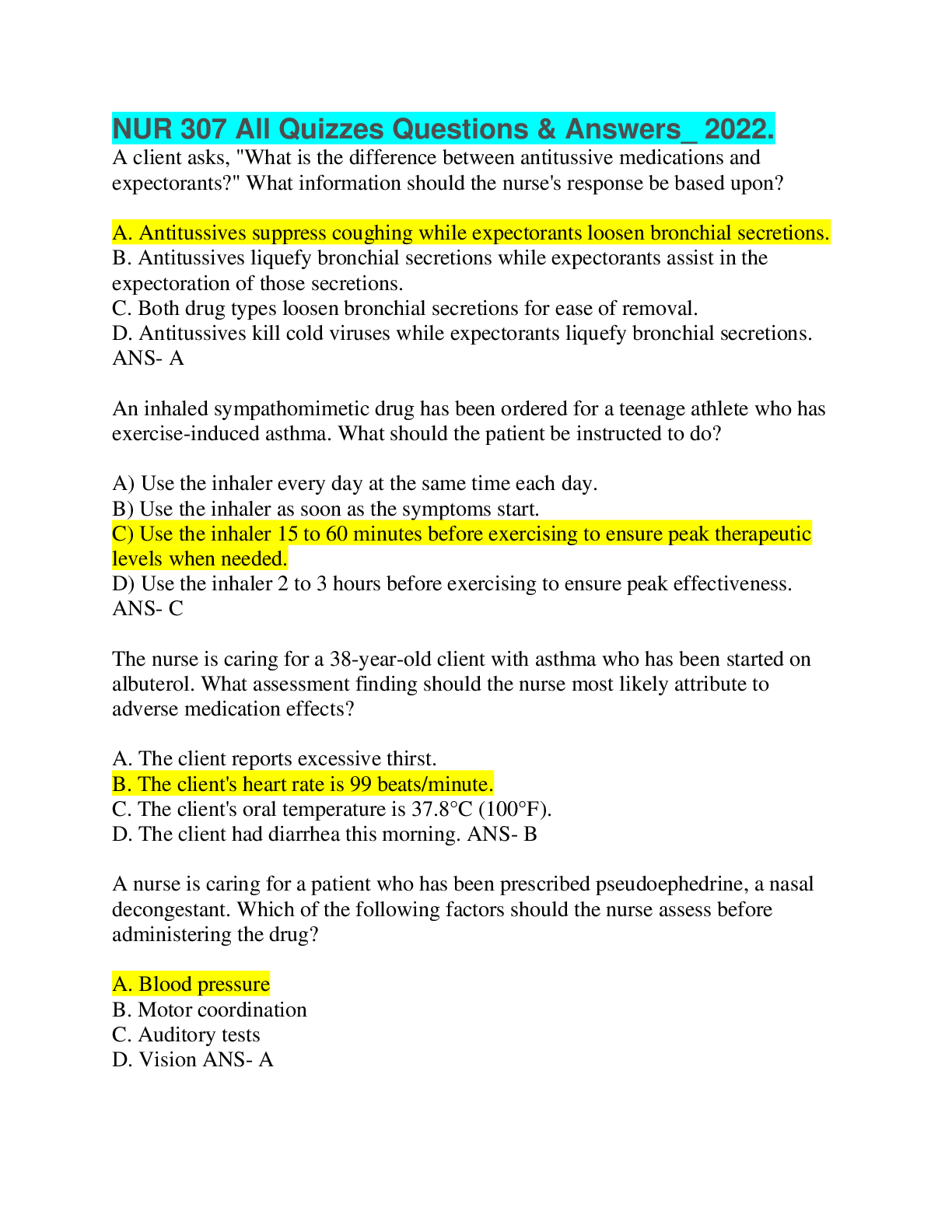
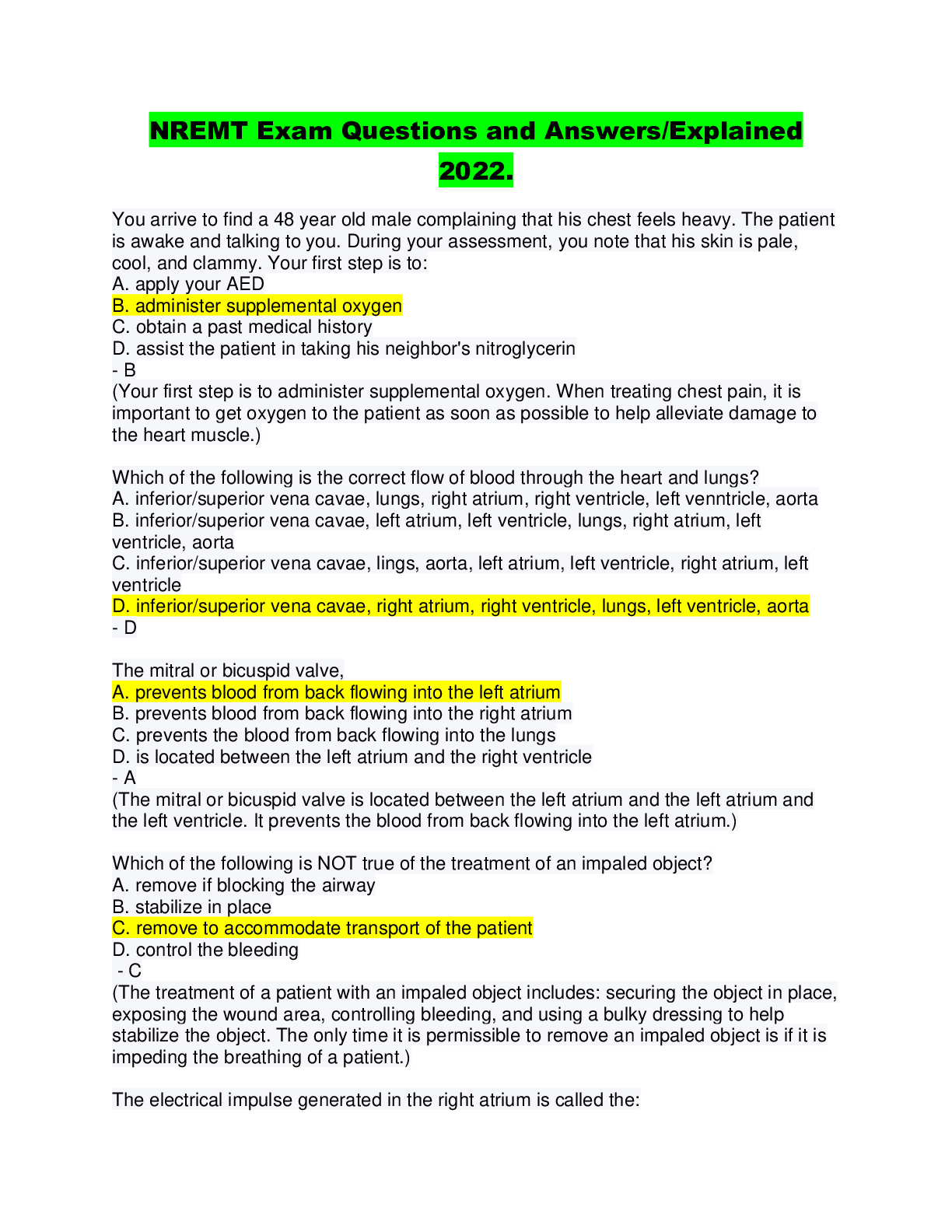

.png)
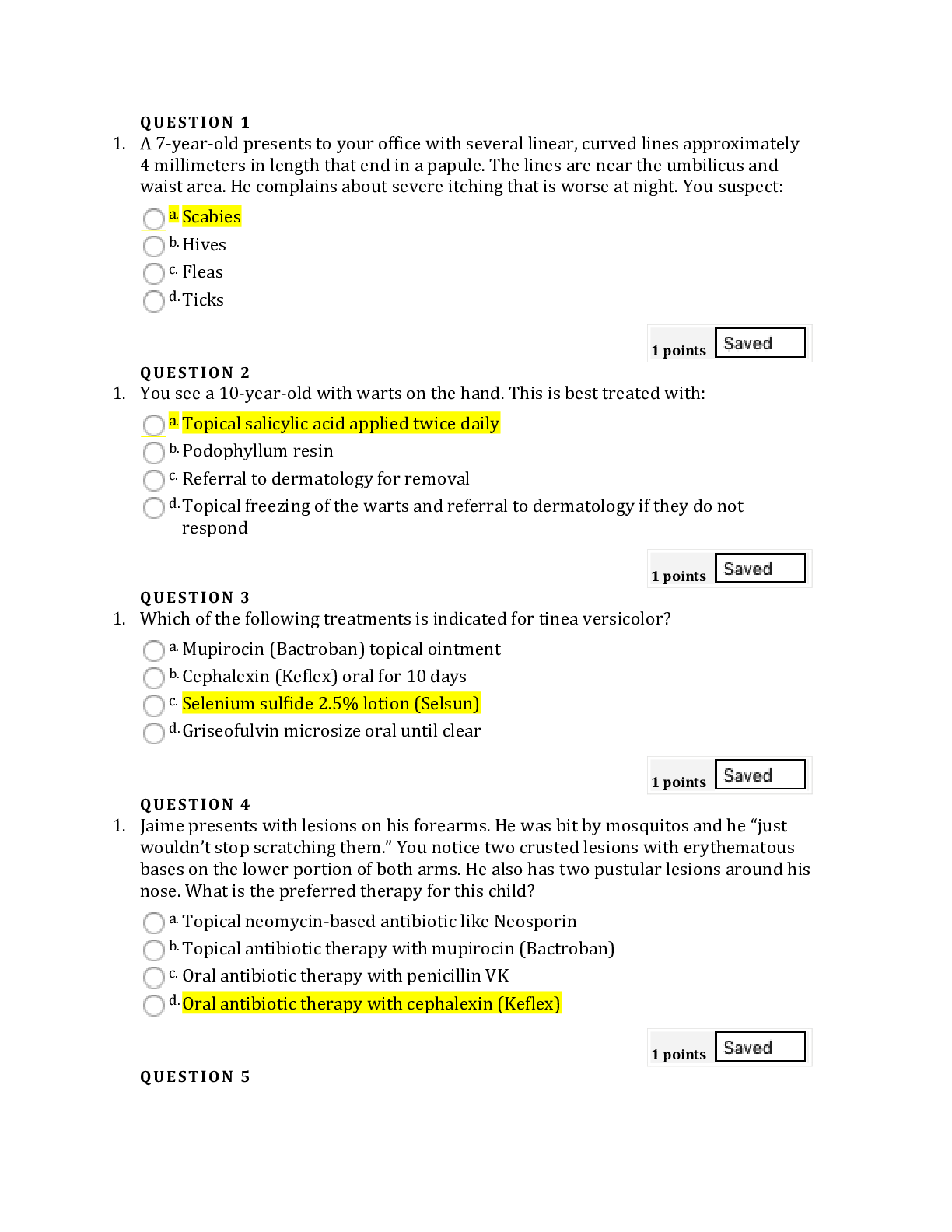
.png)
